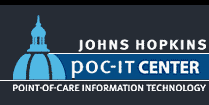|
|
Simeon Margolis, M.D. and Paul A. Pham, Pharm.D.
01-31-2011
- Hyperlipidemia (especially in patients with low HDL cholesterol)
- Atherosclerosis prevention and myocardial infarction prophylaxis
- Niacin deficiency and pellagra
- Niacin decreases production of plasma free fatty acids (FFA) used by the liver to form the triglycerides (Tunaru) carried on very low density lipoproteins (VLDL), which is converted in the circulation to LDL.
- Niacin binds to a specific G-protein-coupled receptor in adipocytes and immune cells (Tunaru).
- When receptor is activated, it lowers cAMP levels, reducing the activity of hormone-sensitive lipase that releases fatty acids from triglycerides in adipose tissue (Tunaru).
- Binding of niacin to the receptor on immune cells also causes the flushing and itching side effects of the drug.
- Niaspan ER (extended release niacin) or Slo-Niacin (controlled release) 500 to 2000 mg at bedtime. Titration schedule: 500 mg qhs (wk 1-4); increase to 1 g qhs (wks 5-8). May increase by 500 mg/ 4-wk (max: 2gm/d)
- Niacor (immediate release niacin): 500 to 1000 mg two to three times a day. Titration schedule: initiate with 100 mg three times a day with gradual increase over 5-8 wks to average dose of 1 gm three times a day (max: 6 g/d).
- Niacin SR: 500mg qhs titrate to maintenance of 1-2 g three times a day.
- Take with food to reduce GI distress and consider ASA for flushing (Guyton).
brand
name
| generic
| Mfg
| brand
forms
| cost*
|
| Niaspan ER | Extended release niacin | Abbott Laboratories | oral
ER tablet
500 mg; 750 mg; 1000mg | $2.49; $3.55, $4.40 |
| Slo-niacin (available over-the-counter) | Controlled release niacin | Upsher-Smith | oral
CR tablet
250 mg; 500 mg; 750mg | $0.09; $0.13; $0.18 |
| Niacor | Crystalline or immediate acting niacin. | Upsher-Smith | oral
tablet
500 mg | $0.28 |
| Niacin (available over-the-counter) | Crystalline or immediate acting niacin | Generic manufacturers | oral
tablet
50 mg; 100 mg; 125 mg; 250 mg; 500 mg; 1000 mg | $0.01-0.06 |
| Niacin SR | Sustained release niacin | Generic manufacturers | oral
SR tablet
250 mg; 500 mg | $0.04; $0.05 |
*Prices represent cost per unit specified and are representative of "Average Wholesale Price" (AWP).
AWP Prices were obtained and gathered by Lakshmi Vasist Pharm D using the Red Book, manufacturer's
information, and the McKesson database.
^Dosage is indicated in mg unless otherwise noted.
- Use with caution in patients with significant renal disease, GFR < 50 ml/min.
- Active liver disease or unexplained elevations in liver transaminases are contraindications to niacin use.
- Use with caution in people with past history of liver disease or who drink alcohol to excess.
- Either stop breast feeding or discontinue the niacin.
- Flushing (occurs in the early course of therapy but generally improves with continued use). Pre-treatment 30 min before niacin with aspirin may help with flushing. (Guyton)
- Abnormal liver enzymes
- Increased uric acid levels
- Itching (consider using antihistamine)
- Exacerbate peptic ulcer disease
- Nausea, vomiting; abdominal pain
- Gout
- Elevation of alkaline phosphatase; Decreased phosphorous (mean 13% decrease)
- Raise blood glucose levels (Elam)
- Hepatotoxicity (incidence may be higher with sustained release niacin)
- Acanthosis nigricans
- Rhabomyolysis when taken with a statin
- Thrombocytopenia
- Rash
-
Statins: Simvastatin and lovastatin may increase risk of myopathy with co-administration although a prospective trial did not find a higher incidence of myopathy when niacin 1gm was co-administered with lovastatin 40mg/d. (Bays et al, 2003) Consider holding dose at simvastatin 10mg or lovastatin 20mg/d with co-administration.
- Oral hypoglycemics: effect may be decreased by niacin. Monitor for therapeutic efficacy.
- Cholestyramine: may decrease niacin absorption. Separate administration time by 4-6 hrs.
- Alcohol and hot drinks: may increase flushing and pruritus. If so, avoid with niacin (Guyton).
- Niacin is the most effective drug for raising HDL cholesterol.
- It can raise HDL by 20 to 35%,lower total and LDL cholesterol by 15 to 25%, and decrease triglycerides by 30 to 50% (Pan). Some reports indicate that niacin also lowers lipoprotein(a).
- Preparations are available over-the-counter, but should only be taken under the supervision of a physician due to risk of major adverse effects. Slo-Niacin has been associated with greater liver toxicity than other niacin preparations (Myers).
- Niacin can be beneficial in patients with type 2 diabetes by reducing LDL cholesterol, triglycerides, and increase HDL cholesterol, but may worsen glycemic control in patients (Elam).
- Flushing often minimized by taking an aspirin or other NSAID 30 minutes before niacin dose (Guyton).
- Flushing may be more severe if niacin dose is accompanied by hot drinks or food. Tends to wane with long term use of niacin (Guyton).
- While many experts have recommended raising HDL cholesterol levels, there is no clear evidence of cardiovascular benefit from raising HDL cholesterol levels with niacin (Briel).
|
|

